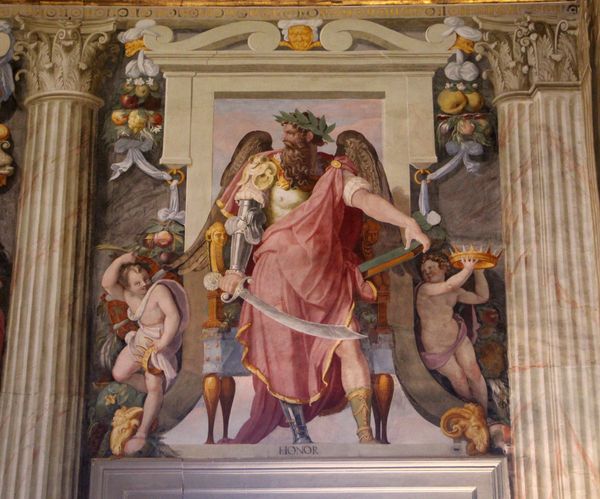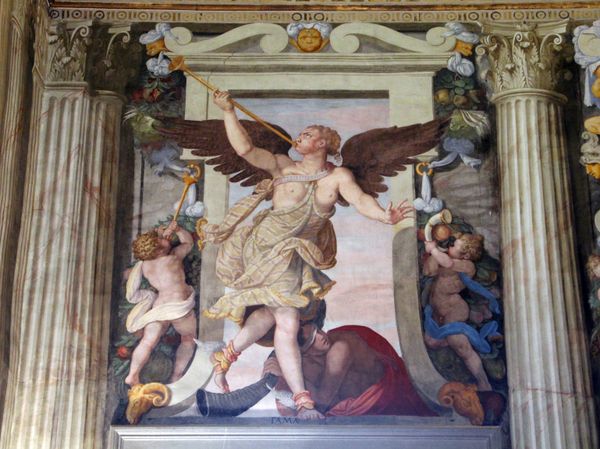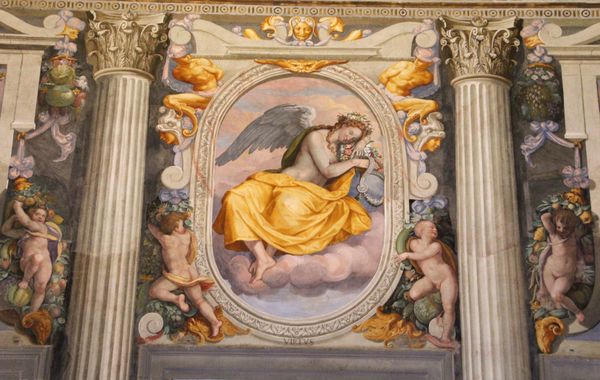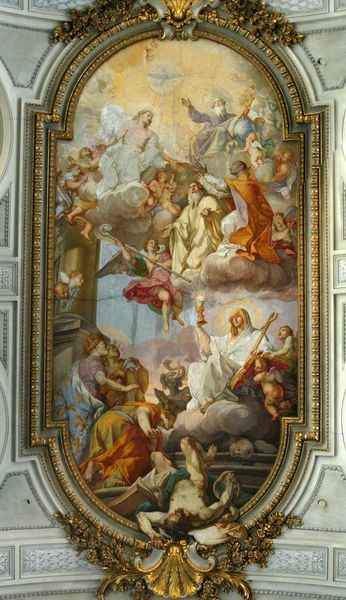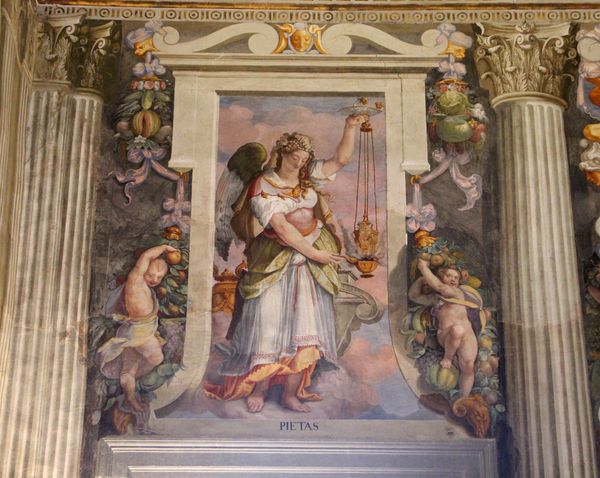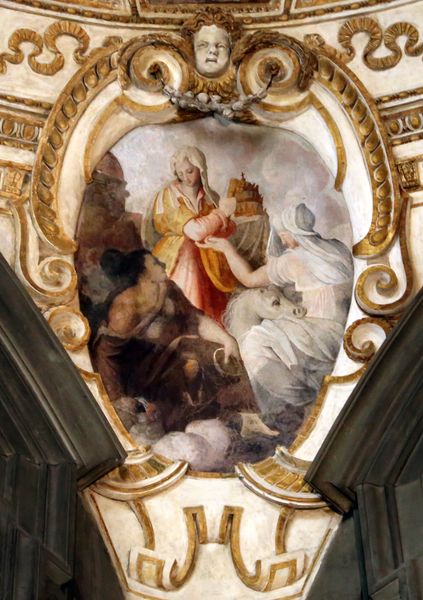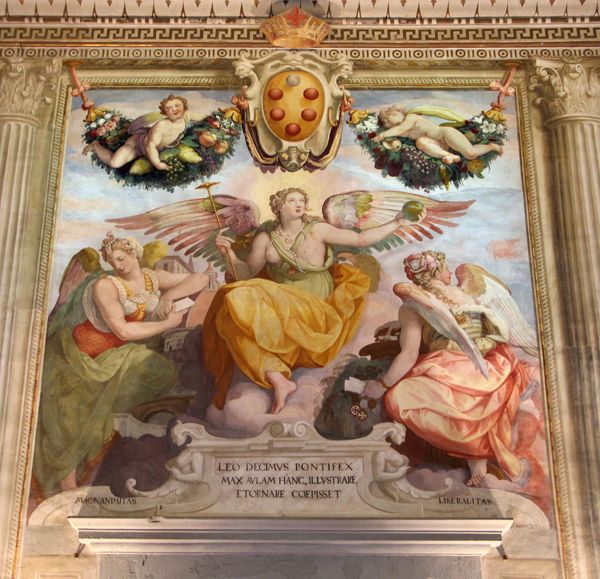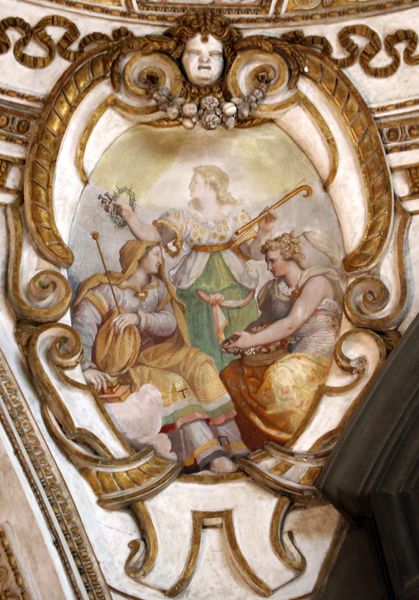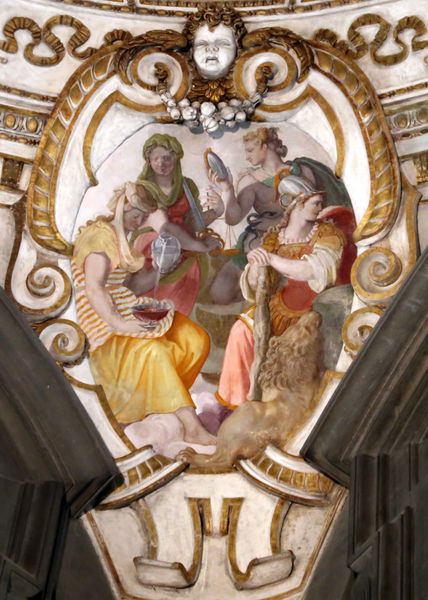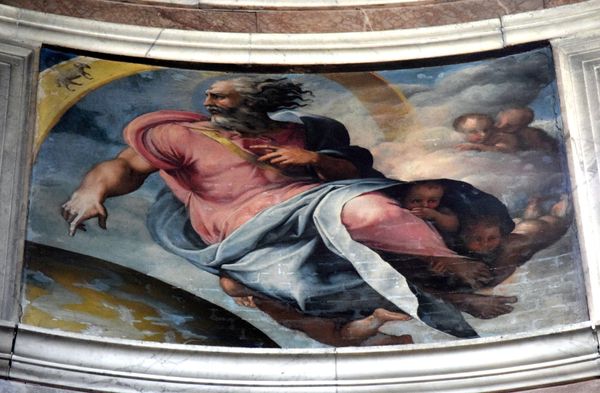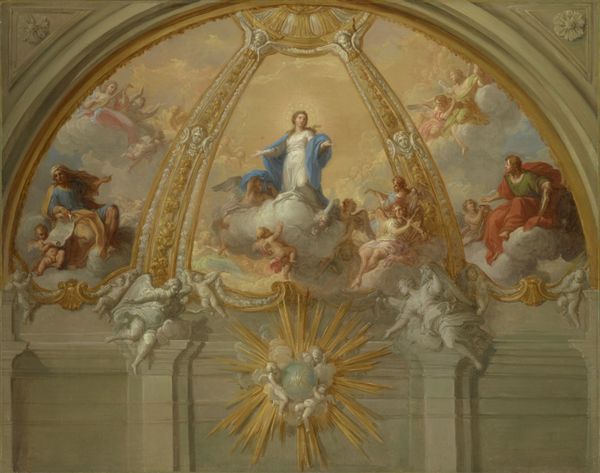
painting, fresco
#
portrait
#
allegory
#
painting
#
sculpture
#
landscape
#
mannerism
#
historic architecture
#
fresco
#
cityscape
#
history-painting
#
academic-art
#
italian-renaissance
Copyright: Public domain
Curator: Here we have Alessandro Allori's "Justice," painted in 1582. It’s an allegorical representation, rendered with fresco technique. What's your immediate take? Editor: Well, there’s a serene balance at play. The central figure dominates, but there’s also a curious dreaminess to the cloud-like background. It's interesting how the putti introduce this sculptural dimension, complicating the fresco's flatness. Curator: Indeed, Allori uses this fresco to communicate values esteemed at the time; he employs specific colors and compositional structure to impart meaning. Let's examine how "Justice", holding the scales and a crown, is depicted, literally weighing power, earthly and divine. It reflects Renaissance humanism but already hints at Mannerism. Editor: The depiction, naturally, serves the social function of visually communicating Justice in 16th-century Florentine society. I am also very intrigued by the setting, this integration of painting, sculpting, and even what seems to be architectural setting. Curator: Precisely. Structurally, her pose creates an upward visual momentum, from the drapery's swirl to her gaze. And how that is counterweighted by the putti on either side and tied together with a garland decoration is just fabulous. Editor: And the fruit around those flanking putti really speaks to me. The bounty of the earth tied to justice, law and order. Perhaps meant to demonstrate how justice delivers good governance to people. That’s also hinted at by the fact that the clouds become more present beneath her feet in the picture, as if a solid ground for Justice doesn’t really exist. Curator: The symbolic resonances ripple outward. And the cool tonality certainly affects the reading of justice here; this feels balanced and calm, not fiery. Editor: This restrained palette, as opposed to something more forceful, certainly feels calculated to suggest the thoughtful deliberation necessary for true justice. It moves beyond raw power. Curator: An interesting blend of aspiration and aesthetic restraint; I see this work anew considering your thoughts on societal norms reflected by colors and depictions. Editor: And reflecting on your examination of color choices has brought new dimensions to my understanding of Justice here too. A fruitful interpretation for both of us, I would suggest.
Comments
No comments
Be the first to comment and join the conversation on the ultimate creative platform.
